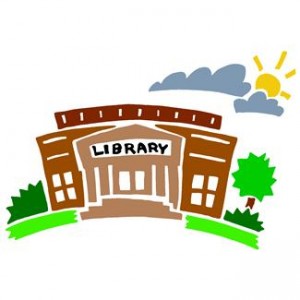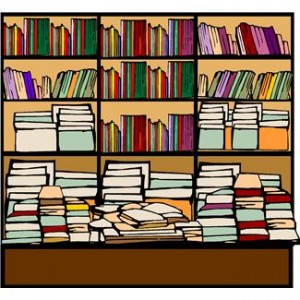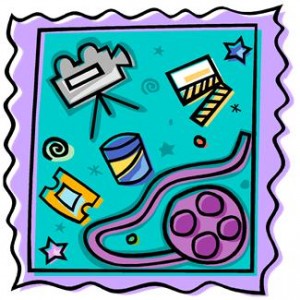Book Trailers ~ Educational Tools
Analine Johnson is a public school librarian in Texas who creates book trailers for specific books that “speak to her” with the hopes of turning her students onto them. Four of her trailers were finalists in a recent School Library Journal contest for the best book trailers. We asked Analine to tell us a bit about who she thinks book trailers are for, and why she feels they’re good educational tools.
ReaderKidZ: Who are book trailers for? The parent, the teacher, or the librarian who buys the books, or the kids who read them?
Analine: Because of the ability to post book trailers so easily and make them accessible, book trailers will potentially have a wide target audience. I believe they’re for everyone. I don’t think they’ve caught on with the mainstream public yet, but I can envision the use of television commercials featuring book trailers in the very near future with James Patterson as the forerunner of this type of advertising, bringing books and readers together.
Because I have been exposed to them as a librarian, I find myself sharing them with my daughter when I think they may be of interest to her – not only content-wise, but also from a creative aspect.
I use book trailers not only to promote books but also to teach students how to create them. So do many other educators I know. It has been my experience that librarians have been the ones to share them with teachers, who in turn share them with their students to either use them as a book talk introduction or as springboard for teaching their students how to create one.
ReaderKidZ: Are book trailers aimed at kids?
Analine: Definitely. Obviously, publishers create them to sell books, but librarians create and/or expose kids to them for reasons that have nothing to do with commercialism. We create and share them to draw in the avid readers, the reluctant readers, and the struggling readers.
ReaderKidZ: Is the purpose of a book trailer to inform, tantalize and explain, or to give a representative sense of the voice, tone, and topic of the book?
Analine: Similar to a movie preview, you want to give a sense of the book in order to entice your audience to read it – to hook them. Book trailers reach out to readers who need this form of visual appeal.
ReaderKidZ: What do you think about the idea of having students make a book trailer as a way for them to show what is important about a book?
 Analine: It’s a good educational tool. It requires them to do internet research to find appropriate visuals and music, explore available technology, and create their own art form.
Analine: It’s a good educational tool. It requires them to do internet research to find appropriate visuals and music, explore available technology, and create their own art form.
In order to create a book trailer, students first need to be instructed on how to create documents, save files, conduct searches, follow copyright guidelines, cite sources, use the `video program, and download music, among other things.
In creating book trailers, the components of reading are also addressed. Creating trailers requires the effective use of story elements. In addition, students have to be able to read the book and effectively capture the tone and mood of it through a nominal amount of images, text, and music – all the while being mindful of not telling the whole story.
Just thinking of a search term needed to find suitable images often requires students to think outside the box. The more extensive their vocabulary, the more successful they will be. When it comes to the music, students have to be aware of timing. So there are many components students need to attend to when creating a trailer.
Students also need to know their target audience and be able to speak to them and draw them in. Trailers incorporate higher-order thinking skills and are a very creative process – much more authentic and engaging than a book report.
ReaderKidZ: In what ways do you think a book trailer might be more effective than a book talk?
Analine: If you have a good book trailer to share with students, it can be far more effective than a book talk alone. Because young people today are immersed in media, video games and the Internet, these digital natives grow up with a more visual sense of storytelling. Book trailers help them visualize what’s in print.
talk alone. Because young people today are immersed in media, video games and the Internet, these digital natives grow up with a more visual sense of storytelling. Book trailers help them visualize what’s in print.
In addition, if coupled with the right music and text/dialogue, book trailers can help create a sense of suspense or intrigue – feelings that are not so easy to evoke with a book talk. Book trailers not only capture the content of a book, but of the mood, as well. They can have the potential of really grabbing the reader’s attention and getting them emotionally involved in the book before they’ve even read it.
ReaderKidZ: Do you feel there’s a certain genre book that works best in book trailers – non-fiction over picture books, for example?
Analine: Books which have really powerful and compelling visuals associated with them lend themselves to dynamic presentations, so I think any genre could work.
ReaderKidZ: What do you see as the unique challenges in creating a book trailer for a book without illustrations or pictures, such as a middle grade novel or YA?
Analine: When we read books devoid of illustrations or pictures, we instinctively create images in our head. Finding those images is probably the most challenging part of the creative process. It’s not only difficult to find an image that matches what you have envisioned; it is also a very time-consuming process.
Because you want to be able to convey a sense of the story with the least amount of images as possible and because you want to use as little text as possible, it’s important that you strive to find that perfect picture. It’s essential that you do your utmost to stay true to the story. It’s a very daunting task to take an author’s work and recreate it in another format.
In addition, the image searching process doesn’t allow for Boolean type searches, so you have to be very creative with your search terms and quite often your searches don’t yield what you are looking for.
ReaderKidZ: Do you have any recommendations as to how teachers, librarians, and even parents might use book trailers?
 Analine: For parents and teachers, book trailers can be used as a tool for helping their kids choose books. In libraries, I have seen them used for book talks, to promote state reading programs, to promote city wide reads, to draw in reluctant and struggling readers, and to motivate kids to read outside their comfort zone.
Analine: For parents and teachers, book trailers can be used as a tool for helping their kids choose books. In libraries, I have seen them used for book talks, to promote state reading programs, to promote city wide reads, to draw in reluctant and struggling readers, and to motivate kids to read outside their comfort zone.
They can be used as examples of how to teach technology, mash-up skills, and research skills, while incorporating the components of reading. From librarians who have taught students how to create them, I’ve heard they’ve been very effective in reaching ESL students and non-readers. Students achieve a sense of ownership when creating trailers and that, in itself, lends to their appeal.
My book trailers are posted on my blog. Through the comment feature, I’m currently collaborating with a teacher to instruct her students on safe social networking while tapping into their writing skills.
ReaderKidZ:You both create book trailers and use them in your library. What got you interested in them?
Analine: I first became interested in them when a colleague posted one she had created on a listserv several years ago. I had never seen one before. Instantly I knew that this was the medium I needed to use to motivate my students to pick up books they found daunting, which happens to be the fiction books.
I think the beauty of book trailers is that they have that ability to speak for themselves. What sets them apart from a book talk is that you can not only reach 20 students face-to-face, but you can reach hundreds of thousands of students online. It’s just a matter of exposing students to them and getting the word out. The teachers in my school had no idea what a book trailer was until I showed them one. I’ve seen some of the most creative ways of exposing students to book trailers come from librarians.
Besides using them for book talks, librarians are looping them on flat screens in their libraries and housing the featured books on displays. They are also looping them on digital photo albums and displaying them in different areas of their libraries. They are posting them to their blogs, OPACS, and homepages, as well as sharing them on various Internet sites.
ReaderKidZ: What program do you use to make your book trailers?
Analine: I use Windows MovieMaker. I recently started using Adobe Photoshop for modifying and remixing photographs. Windows MovieMaker is free and easy to use. In addition, it’s a program that is accessible to all our students.
Analine Johnson has spent 11 years in the field of elementary education. This year marks her fifth year as the librarian for Rodolfo C. Centeno Elementary in Laredo, Texas, where she blogs at La Lucha Libro Library. She received her B.S. in merchandising from Texas Woman’s University, and her MLS from Sam Houston State University.










